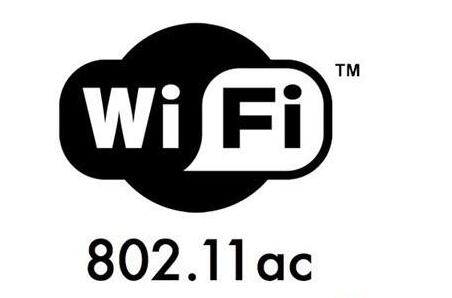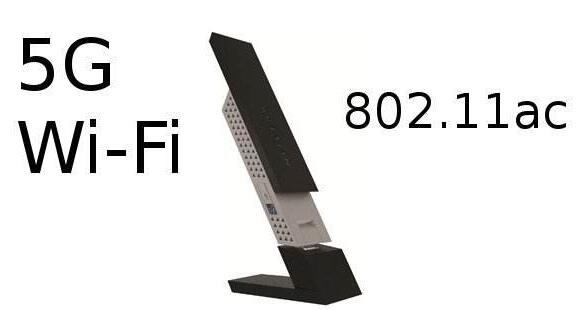Since most 802.11n devices are designed for the 2.4 GHz band, there are fewer available channels in 2.4 GHz, and there are interferences from other devices operating in the 2.4 GHz band (such as Bluetooth, microwave ovens, wireless surveillance cameras, etc.), even in the double The connection rate of the spatial stream at a bandwidth of 40 Mhz can reach 300 Mbps. However, in an actual network environment, the actual throughput is not high and the user experience is poor due to mutual channel collisions and other reasons. 802.11ac is designed specifically for the 5GHz band and features a unique new radio frequency that can increase the performance of existing wireless LANs to a level comparable to a wired Gigabit-class network.
802.11ac, a new standard for IEEE wireless technology, draws on the advantages of 802.11n and further optimizes it. In addition to the most obvious high-throughput features, 802.11ac is not only well compatible with 802.11a/n devices, but also has improved Item user experience.
In the 802.11ac network, each wireless access point can accommodate more clients, providing more bandwidth for each concurrent service flow, and at the same time, it has the advantages of lower latency and more power saving.

802.11ac, commonly known as 5G WiFi, is an 802.11 wireless local area network (WLAN) communication standard that communicates via the 5GHz band (which is also the reason for its name). In theory, it can provide at least 1Gbps bandwidth for multi-station wireless LAN communication, or a single connection transmission bandwidth of at least 500Mbps.
Working frequency band: 5GHz
Operating bandwidth: 20MHz, 40MHz, 80MHz, 160MHz
Transmission rate: 867Mbps@20MHz, 1.73Gbps@40MHz, 3.47Gbps@80MHz, 6.93Gbps@160MHz
Key technologies: QAM256 modulation, MU-MIMO (up to 8 streams)
Transmission distance: 30 meters (refer to maximum transmission rate)

802.11ac is the successor to 802.11n. It employs and extends the air interface concept derived from 802.11n, including: wider RF bandwidth (up to 160MHz), more MIMO spatial streams (up to 8), multi-user MIMO, and high-density demodulation (up to 256QAM).
802.11ac works in the 5.0GHz band to ensure backward compatibility, but the data transmission channel will be greatly expanded to 40MHz or 80MHz on the basis of the current 20MHz, and may even reach 160MHz. Adding about 10% of the actual frequency modulation efficiency, the new standard's theoretical transmission speed is expected to reach 1Gbps, which is more than three times that of 802.11n 300Mbps.
From the core technology point of view, 802.11ac is established on top of the 802.11n standard, including the 5GHz band that will use 802.11n.
However, in the setup of the channel, 802.11ac will continue to use the 802.11n MIMO (Multiple Input Multiple Output) technology to lay the foundation for its transmission rate to reach the Gbps level. The goal of the first phase is to reach the transmission rate of 1Gbps, and the purpose is to achieve The transmission rate of the cable.
The operating bandwidth of each channel of 802.11ac will be increased from 802.11n's 40MHz to 80MHz or even 160MHz, plus about 10% of the actual frequency modulation efficiency, the final theoretical transmission speed will jump from the highest 600Mbps 802.11n to 1Gbps. Of course, the actual transmission rate may be between 300 Mbps and 400 Mbps, which is close to 3 times the actual transmission rate of the current 802.11n (the actual transmission rate of the current 802.11n wireless router is between 75 Mbps and 150 Mbps), and it is fully enough to transmit more on one channel at the same time. Road compressed video stream.
In addition, 802.11ac will also be backward compatible with all existing and upcoming releases of the 802.11 family of standards and specifications, including the upcoming 802.11s wireless mesh architecture and 802.11u. In terms of security, it will fully comply with all the contents of the 802.11i security standard, enabling wireless connectivity to meet the needs of enterprise users in terms of security. According to 802.11ac's implementation goals, 802.11ac will enable businesses or households to seamlessly roam in the future, and can support the corresponding security, management, and diagnostic applications of wireless products during roaming.
802.11ac offers the following technologies to increase network bandwidth and better user experience:
1, support a wider bandwidth (RF Bandwidth): up to 160 MHz (802.11n cap is 40 MHz)
2. Supports up to 8 MIMO Spatial Streams (802.11n supports only 4)
3, multi-user MIMO (MulTI-user MIMO) (802.11n no such feature)
4. Beam forming (Beam forming) (802.11n non-standard function)
5, support high-density modulation (Modulation): 256 QAM (802.11n up to 64-QAM)

1, no interruption of scalability. In most settings, the 802.11ac installation will cover 802.11n or older infrastructure. Importantly, 802.11ac APs need transparent support, perhaps initially backward compatible with 802.11n mode, and even as sensors to detect unauthorized 802.11n activity. These new APs can later be converted to configuration access.
Dual Gigabit Ethernet ports: Dual-radio radios are common in today's APs, and two 802.11ac wireless radios may overwhelm individual ports. You should consider deploying two GbE ports on any dual-radio RF AP. Of course, 1.3 Gbps throughput is unlikely to overwhelm Gigabit Ethernet (GbE) switch ports, as actual throughput may not exceed half of the peak. Please note that the supplier will usually mention the maximum possible speed, which is unlikely to be a problem with given radio frequency propagation and other wireless transmissions.
3, support dense deployment. The wider channels of the 802.11ac access point (2.4 and 5 GHz bands) and better radio modulation, combined with ever-increasing capacity requirements, mean that we may need more APs. Given the inherent complexity here, the control function should be able to configure the AP itself, make key decisions on wireless channel and transmit power allocation, and automatically satisfy other operational parameters.
4, enhanced management capabilities. The overall management function may be the main difference between performance and value. To do this, it is necessary to carefully consider how to make these innovations not just improve throughput and reliability, but also improve IT management efficiency and total cost of ownership.
The advantages of 802.11acAlthough the speed of AC has reached “Gbps levelâ€, in the future version, the transmission speed may reach 7Gbps, which is a huge leap forward for 802.11n.
Compared with previous versions, each AC access point can handle more users, so the network can handle more devices.
The 802.11ac specification uses wider channels. Although the AC access point will use 20, 40, and 80 Mhz channels in the initial release, the access point may use 160 Mhz channels in future releases.
Since 802.11ac operates only in the 5 Ghz band, networks using this specification will hardly interfere with other devices.

Newest Vape,New E-Cigarette,Electronic Cigarette Vaporizer Pen,Custom Vaporizer Pen
Guangzhou Yunge Tianhong Electronic Technology Co., Ltd , https://www.e-cigaretteyfactory.com